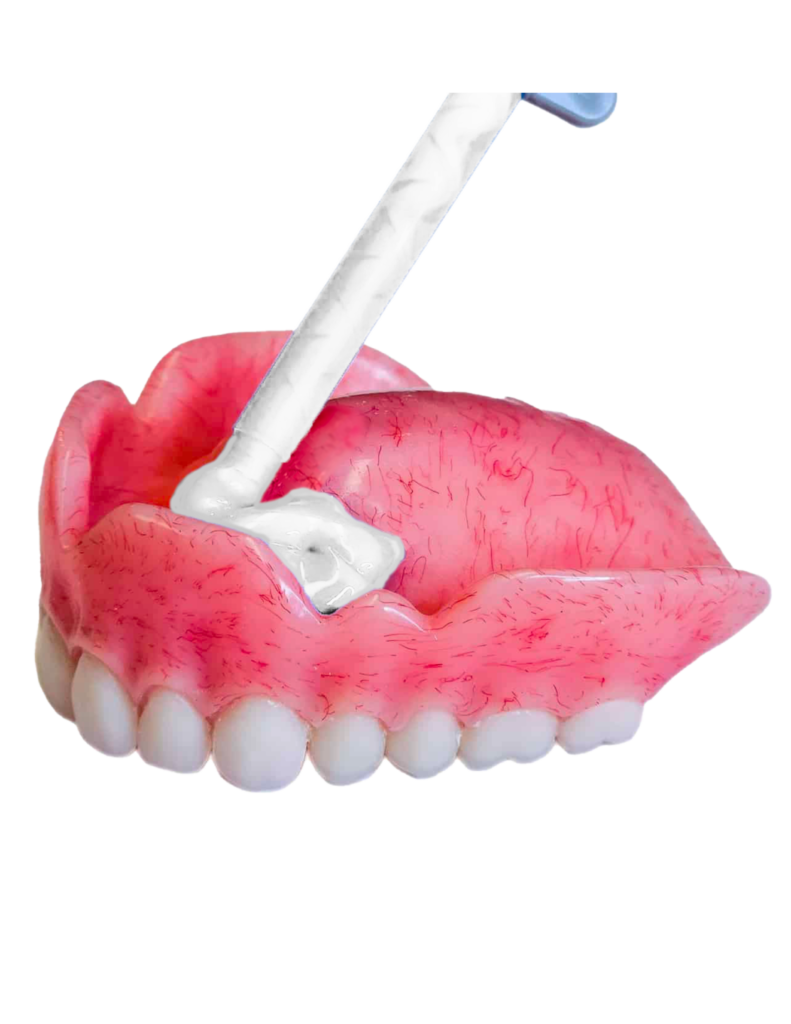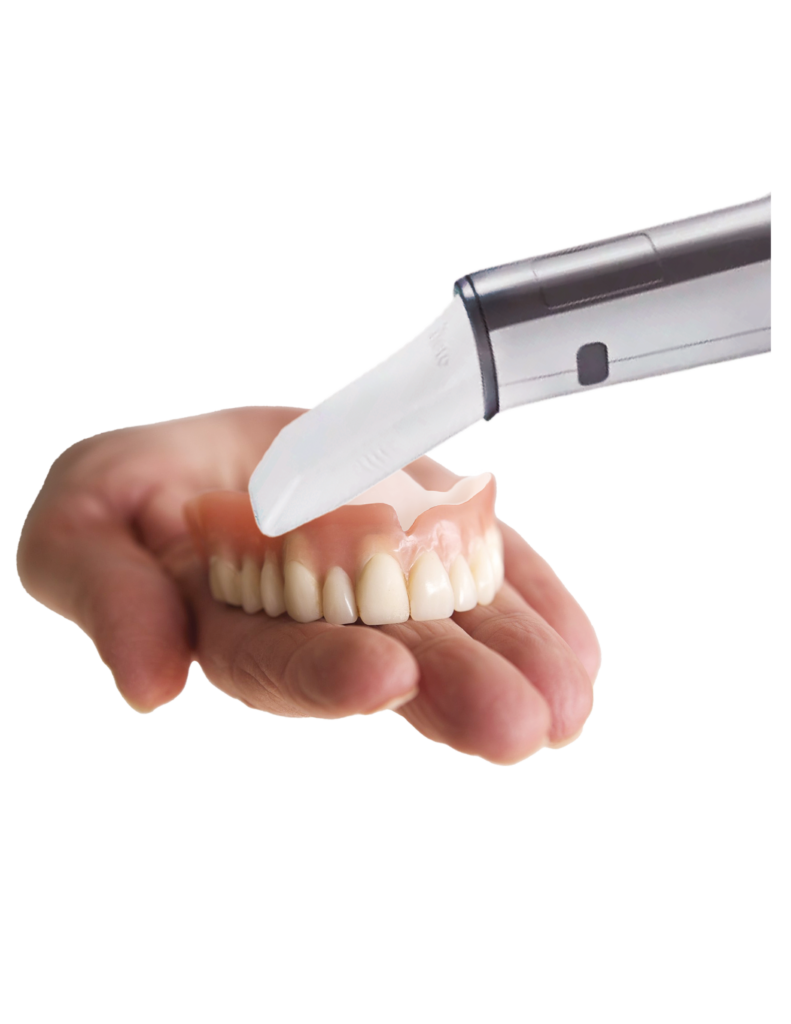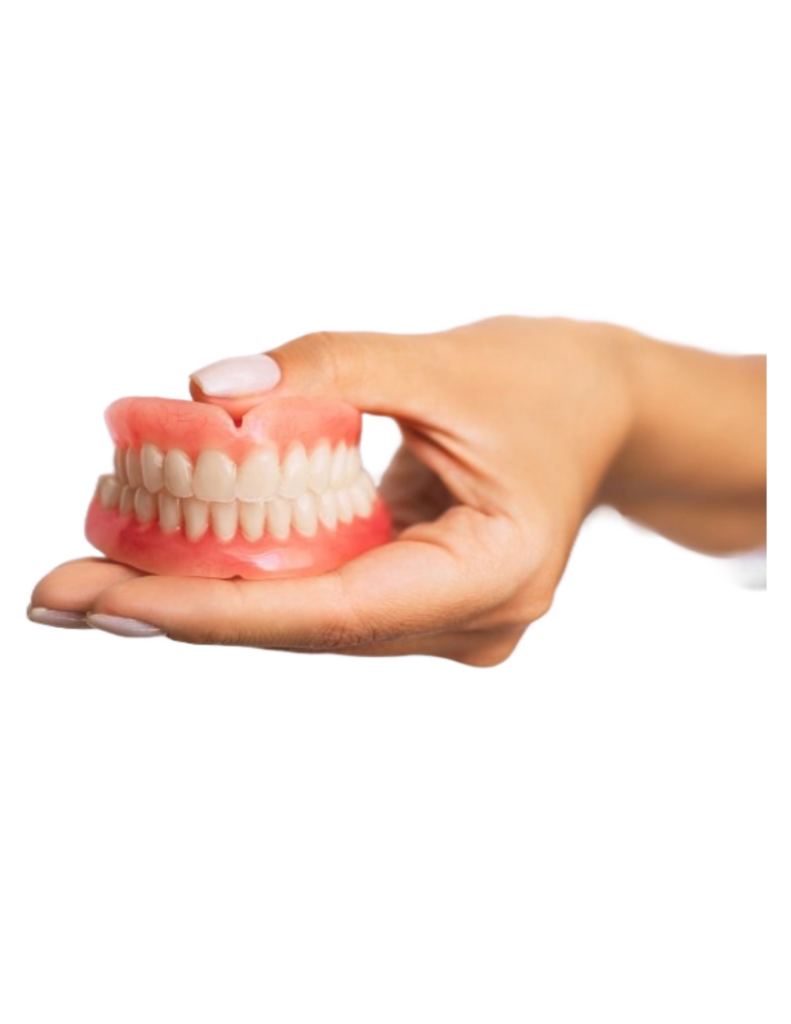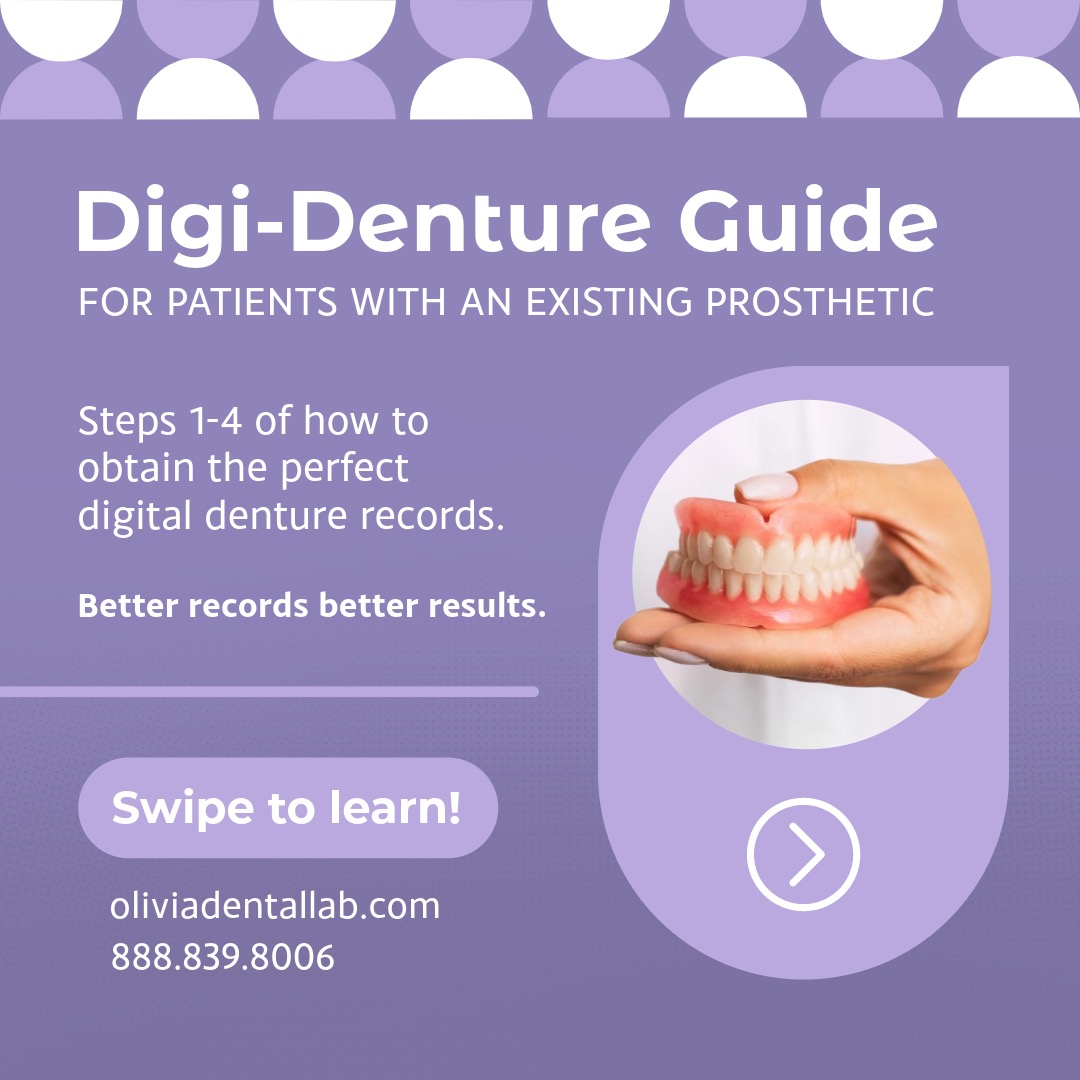|
Listen & Learn
Getting your Trinity Audio player ready...
|
Creating a high-quality final denture for a patient with an existing prosthetic requires precision and an understanding of the patient’s oral anatomy and preferences. Here’s a straightforward guide from Olivia Dental Lab to ensure the best possible outcome:
Click the link to download the guide to patients with an existing prosthetic.

1- Use Existing Prosthetic as a Custom Tray
To capture the most accurate tissue representation, begin by performing a reline impression using the patient’s existing prosthetic. This step is crucial for obtaining a detailed record of the current state of the patient’s oral tissues. Additionally, this process can help re-establish border molding, ensuring that the final prosthetic fits comfortably and securely. We recommend Ceo-Soft by GC

2- Take an Updated Bite Scan
With the prosthetic still in the patient’s mouth, conduct a bite scan to confirm the new Vertical Dimension of Occlusion (VDO) and Centric Relation (CR) positions. This is essential for ensuring that the patient’s jaws are aligned correctly, promoting a balanced and functional bite. The goal here is to bring the patient to a neutral or “zero position,” where the muscles and joints are at their most relaxed and natural state.

3- Take a 360-Degree Scan of the Prosthetics
Once the prosthetic has been removed from the mouth, perform a comprehensive 360-degree scan. This step is instrumental in creating a definitive record of the prosthetic, which will serve as a guide for the final fabrication process. By capturing every angle and detail, you can ensure that the final denture will be a perfect fit for the patient.

4- Finalize the Script
Before moving forward with the final fabrication, take a moment to re-confirm the VDO/CR with the patient, as well as any aesthetic preferences they may have. This is your opportunity to make any necessary adjustments and fine-tune the details, ensuring that the final product not only meets but exceeds the patient’s expectations in terms of both function and appearance. Please describe to the best of our ability what changes are taking place.
By following these steps, dental professionals can create a final denture that offers an optimal fit, function, and aesthetic appeal, ultimately improving the patient’s quality of life. Remember, the key to success lies in attention to detail and a thorough understanding of the patient’s needs.

